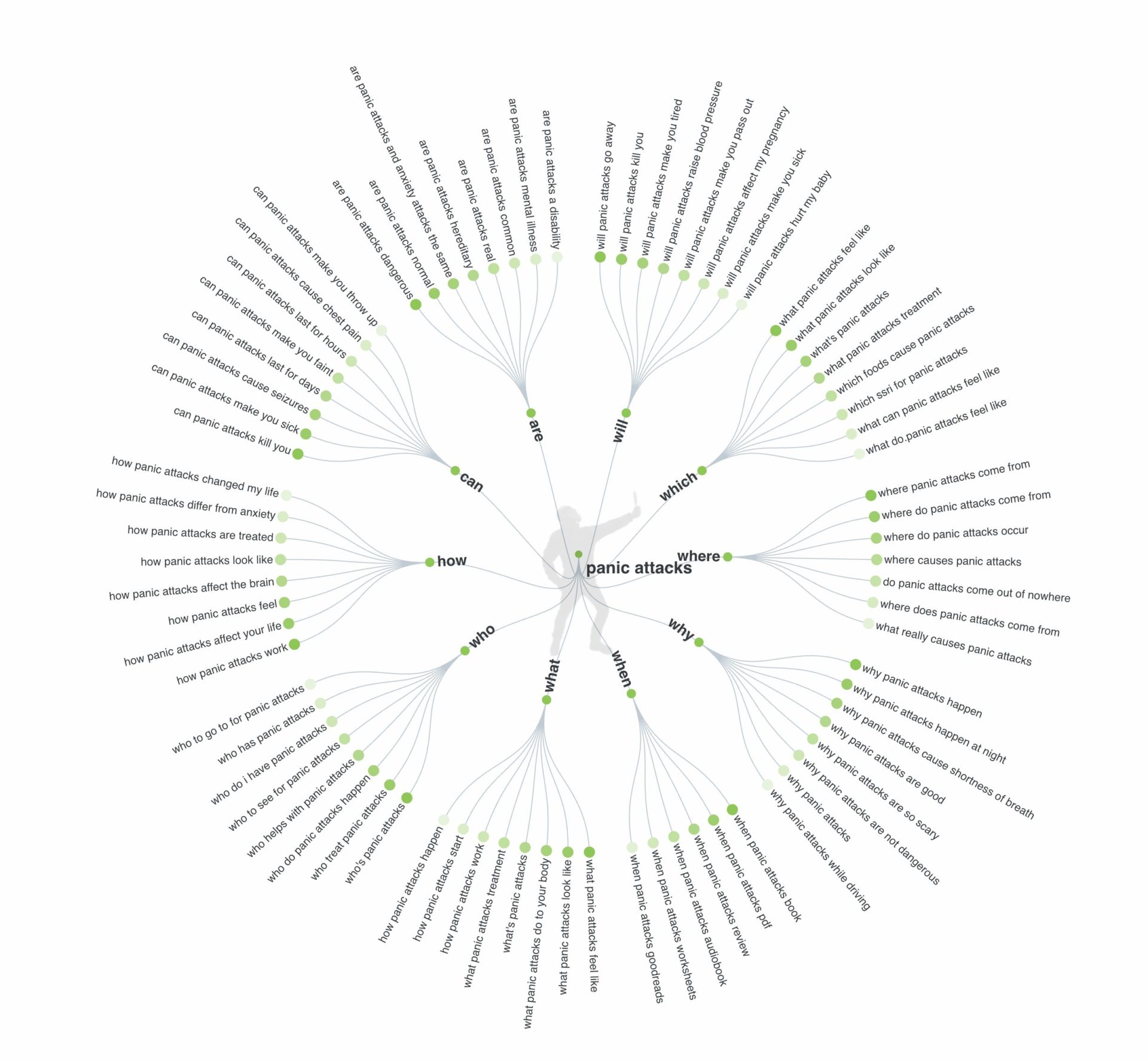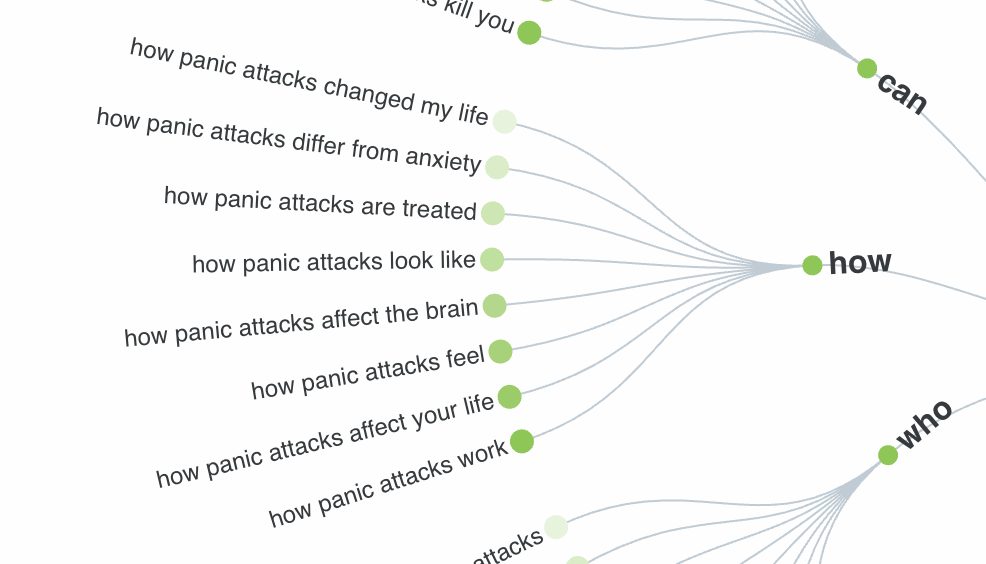At this point, you may already know the benefits of blogging for your private practice. But if you’re like most therapists, you might get hung up on what therapy blog topics to actually focus on.
I totally get that!
When I started my first therapy blog, I’d put off blogging for ages. And the biggest reason why is because I had absolutely no idea what blog topics to write about!
So in this article, I put together a few easy hacks to help you generate TONS of therapy blog topics. Let’s hop into it!

Why start a therapy blog?
First of all, if you’re on the fence about whether it’s a good idea to start a blog for your therapy practice, I have an article covering all the benefits of blogging. You can check that out here: Therapist Marketing Tip: Start a Blog
In summary, a blog can be really helpful in getting potential clients to find you, building trust with potential clients, and offering resources to existing clients.
Blogging works. It’s one of the main ways that I successfully grew my practice, and it’s also one of the primary ways folks find out about Private Practice Skills. I mean, here YOU are reading this very blog post! Proof that blogging is helpful!
And blogging is completely FREE. So it’s worth its weight in gold.
Let’s hop into those five hacks to generate tons of therapy blog topics:
1. List out your clients’ top pain points
Think about your specialties and your favorite clients to work with. When they first reach out to you and when they arrive for their first therapy session with you, what sorts of things do they bring up over and over again as concerns?
It’s important to think about this from your client’s perspective, using their language, rather than the clinical explanation for their pain points.
For example, if you treat children with ADHD, the pain points from their caregiver’s perspective might look different than simply: “My child is struggling with ADHD.” It might sound more like this:
- My child isn’t getting their schoolwork done on time.
- My child throws tantrums when I ask them to do simple tasks.
- My child can’t seem to sit still at the dinner table.
Really get your head into the mind of your client (or if you work with kids, the mind of their caregiver in this case), and name all the common problems and pain points they experience.
When you’re ready to write a blog post, simply convert this pain point into an answer. Here are some sample blog posts you could create with the above pain points:
- How to help your ADHD child get their schoolwork done on time
- What to do when a child with ADHD throws a tantrum
- Three ways to help a child with ADHD sit still
The title and content of the post now directly help solve a problem that your clients are searching for, and therefore it’s more likely that they’ll want to read it!
2. List out your favorite therapeutic tools, hacks, and resources
This also gets at the idea of solving your clients’ pain points, but from a different angle. You can create blog posts focused on specific solutions to help clients face their problems and pain points.
For example, if you focus on treating panic-related issues and you frequently help your clients with deep breathing exercises, recommend a certain mindfulness app, and implement systematic desensitization with your clients, here are a few blog posts you could create:
- Implement this deep breathing exercise to soothe your panic
- How to use the Calm app to conquer anxiety
- Why facing your fears helps eliminate panic attacks
By listing out all your favorite tools and resources, you’ll find that each one has the potential to become a blog post – again, focusing on addressing a specific problem or pain point your clients might experience.
An easy hack to list these out is simply to peruse through your client treatment plans and notes. What sorts of tools have you utilized over and over again? Keep a running list so you can pull from it when you’re ready to blog.
3. List common hangups your clients have about seeking help
Some of these hangups might feel more universal, such as the stigma that’s associated with therapy in general and some of the questions folks have about whether the investment in therapy is worth it. You can address these too, but here I’m referring particularly to the hangups that pop up specifically with your ideal clients.
Ask yourself: What are the barriers that keep my clients from really diving into therapy?
For example, if you focus on helping couples recover from infidelity, you might often hear hangups like:
- What if I can’t ever trust my partner again after what they did?
- How can I prove to my partner that I’ll never cheat on them again?
- I shouldn’t have to go to couples therapy, my partner is the one who cheated on me!
You can turn each of these hangups into blog posts. Here are example therapy blog topics based on the hangups listed above:
- Is it possible to trust your partner after they cheat on you?
- How to show your partner that you’ll never cheat again
- Why BOTH partners need to see a couples therapist after infidelity
Again, you’re still addressing a type of pain point with these blog topics. The pain point is the hangup that’s making it difficult for your ideal clients to access counseling services with you. You’re addressing them with a bit of education to help them overcome those hurdles.
An easy way to list these out is to simply keep a running list of hangups. As you see your clients, whenever you hear them name a hurdle like this, just add it to your list after the session or workday is over.
4. Give a behind the curtain peek to your therapy practice
This category of blog post is particularly helpful to reduce stigma around therapy and help build trust with potential clients when they’re clicking around your site before they decide to work with you. You can answer these questions and turn each one into a blog post:
- Why I became a [fill in your specialty] therapist
- What I love most about working with [fill in presenting issue]
- What I wish my clients knew about themselves
- What I really think about working with [fill in the blank presenting issue]
You can really tailor this to your practice and think of appropriate ways to give a look into your practice and why you do the work that you do. So feel free to brainstorm more ways you’d like potential and existing clients to know the inner workings of your therapy practice.
5. Use AnswerThePublic.com to multiply your therapy blog topics!
This is a legit, straight up HACK. I can’t believe more people don’t know about this!
After you do some or all of the first four hacks, go to answerthepublic.com and in their search bar write in 1-3 word phrases that represent each item in your list. Each search will generate TONS more therapy blog topics.
Seriously, you will have more blog post ideas than you’ll even be able to keep up with.
Pulling from our examples above, I did a search for “panic attacks” and took a screenshot of what Answer the Public spat out in response. Take a look:

There are so many possible blog topics in there you probably can’t even read all of it from this photo. So here’s a zoomed-in section from the photo so you can see better what’s going on:

In fact, this was just the first page of results. As I scrolled down, there were several more grids with topics!
Here’s how this hack is a double-whammy win: Not only does Answer the Public do the work of generating blog topics for you, but it’s also reflecting questions people are typing into Google Search.
That means that if you write a blog post using a title from Answer the Public, there’s a good chance your blog will get found in Google Search results!
WIN!
Next steps for therapist blogging
Now that you have a massive list of therapy blog topics to write about, it’s time to get writing!
If you’d like some help knowing how to approach writing the blog post, I have a video all about that! Feel free to check it out here: How to Write a Blog Post for Private Practice – Step by Step!
Whether you’re just getting started in your counseling practice or if you’ve been blogging for years already, I hope you found this article helpful to generate tons of new therapy blog topics.
And until next time, from one therapist to another: I wish you well!
-Marie
Photo by Ekaterina Bolovtsova from Pexels
Leave A Reply